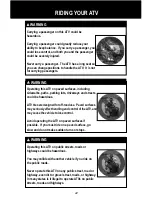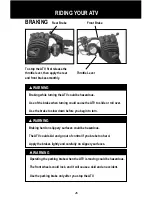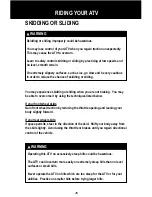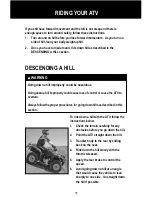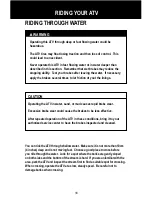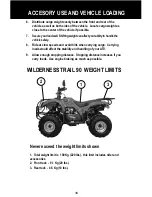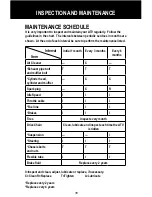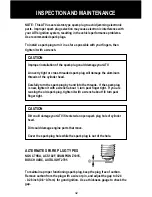
TURNING
To turn the ATV, the rider must use the proper technique. Because this vehicle
has a solid rear axle, both rear wheels always turn at the same speed. This
means that if the rear wheels are getting equal traction, the vehicle will tend
to move straight ahead. This is because the rear wheels will travel the same
distance. For the vehicle to turn, the outside rear wheel must travel a longer
distance that the inside rear wheel. To make this happen, the rider must
create less traction for the inside wheel, allowing it to skid. This allows it to
travel a shorter distance than the outside wheel. This happens even though
both wheels are still turning at the same speed.
FOR HIGHER SPEEDS OR SHARPER
TURNS
Use the same technique that you use when you move your body weight
farther toward the inside of the turn to maintain your balance. Natural turning
forces (which can push the vehicle to the outside of the turn) increase as the
speed or the turn sharpness increases. This means you must lean your body
farther into the turn as you go faster or turn more sharply. This prevents the
vehicle from tipping over to the outside of the turn. If your ATV starts to tip
while turning, lean your body farther into the turn while gradually reducing the
throttle and making the turn wider, if possible.
WARNING
Turning the ATV improperly could be hazardous.
If you turn the ATV improperly, it may cause a collision or overturn.
Always follow proper procedures for turning as described in this section.
Practice turning at low speeds before attempting to turn at faster speeds.
Never turn at excessive speeds.
To turn ATV, use the following technique:
· Move your body weight forward and to the
inside of the turn.
· Turn the handlebar while looking in the
direction of the turn.
RIDING YOUR ATV










